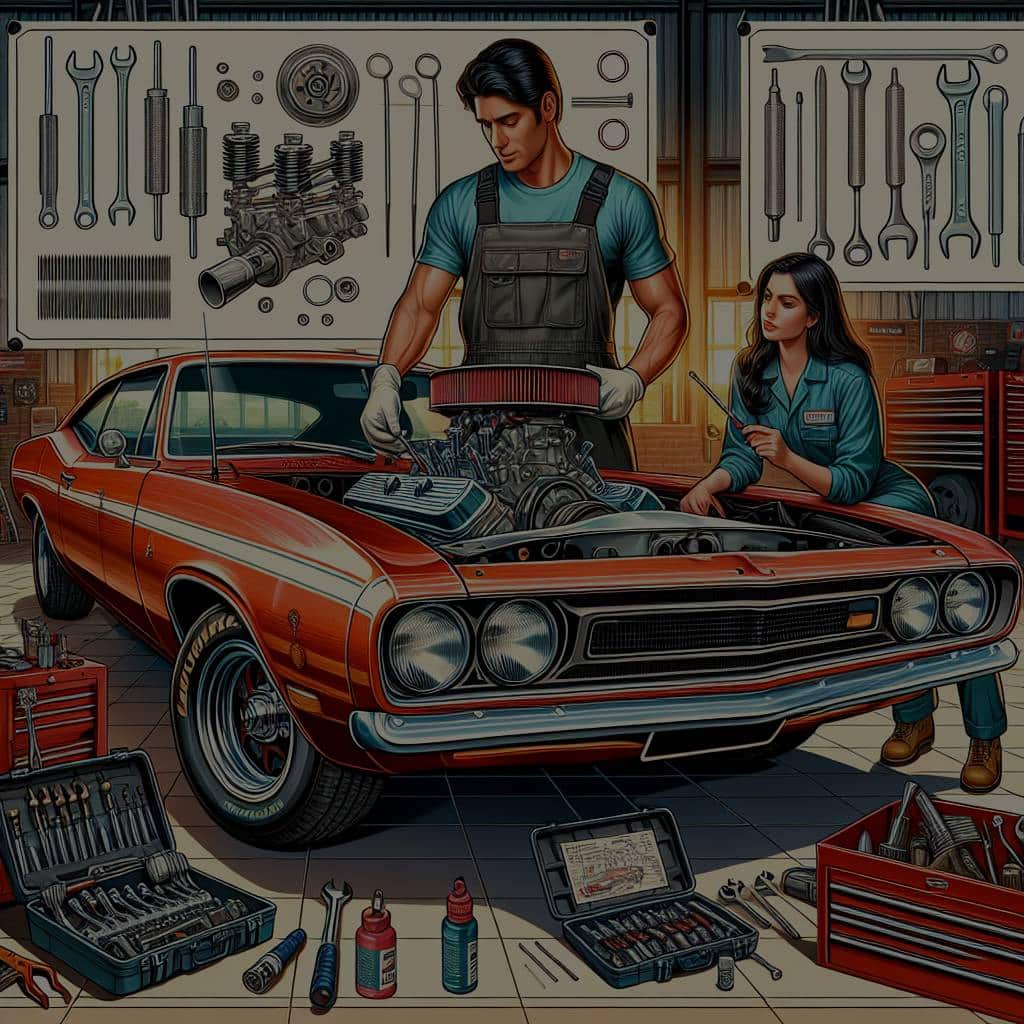How to Adjust the Valve Lash on an Old School Muscle Car?

Are you a car enthusiast or a DIY mechanic who loves to tinker with vintage muscle cars? If so, you’ve probably encountered the need to adjust the valve lash in the engine. Understanding the mechanics of valve lash, what it is, how it affects your engine, and most importantly, how to properly adjust it, is crucial to not only maintaining but also enhancing the performance of your beloved muscle car. This article will guide you through the process of adjusting valve lash, highlighting key elements such as valves, rocker arms, camshafts, and more.
Understanding the Valve Lash
Before we delve into the technicalities of adjustment, it’s essential to fully comprehend what valve lash is and why it’s significant.
Also read : Can a High-Output Fuel Pump Improve the Performance of a Turbocharged Lexus ISF?
Valve lash, simply put, is the gap between the rocker arm and the valve stem tip. It’s a crucial aspect of your engine’s operation, impacting its performance and longevity. The valves in your car’s engine allow air and fuel to enter the cylinders and exhaust gases to escape. They ensure that your engine runs efficiently and smoothly.
The valve lash must be adjusted periodically to maintain optimal engine performance. If the gap is too large, the valve will open late and close early, which can lead to lower performance. On the other hand, if the gap is too small, the valve may not close completely. This can lead to the valve burning out, potentially causing significant engine damage.
Have you seen this : How to Perform a Leak-Down Test on a Vintage Car Engine?
The Tools You Will Need
Prior to getting your hands greasy, you should ensure you have all the necessary tools.
To adjust the valve lash, you will need a set of feeler gauges, a wrench, and a screwdriver. The feeler gauges will be used to measure the gap between the rocker arm and the valve stem tip. The wrench and the screwdriver, on the other hand, will be utilized for the actual adjustment.
While the tools required are relatively basic, it’s essential to keep in mind that precision is key in this process. Therefore, ensure your tools are of good quality and in excellent working condition.
Setting the Valve Lash
Setting the valve lash is a precise process that involves multiple steps.
First, you need to locate the rocker arm and valve stem tip inside the engine compartment. Turn the engine until the valve lifter is at its lowest point on the cam, this is also known as the base circle or heel of the cam.
Next, measure the existing gap using a feeler gauge. Slide the gauge between the rocker arm and the valve stem tip. If the gauge slides in with slight resistance, the lash is set correctly. If there’s no resistance or the gauge cannot fit, adjustment is needed.
To adjust the valve lash, loosen or tighten the adjusting nut on the rocker arm with a wrench. If the gap was too large, tighten the nut to decrease the gap. Conversely, if the gap was too small, loosen the nut to increase the gap. After adjusting, recheck the gap with the feeler gauge to ensure it’s correct.
Repeat this process for all the valves in your engine. Remember to turn the engine and set the lifter at its lowest point on the cam for each valve.
Adjusting Valve Lash on a Hot Engine
So far, we’ve discussed adjusting valve lash on a cold engine. However, some old school muscle cars require lash adjustment when the engine is hot.
When the engine is hot, the metal parts expand due to heat, which can affect the valve lash. Therefore, adjusting the valve lash on a hot engine involves a different process.
Start by warming up your car to its normal operating temperature. Then, turn off the engine and quickly adjust the lash on each valve. The process of measuring and adjusting is the same as described earlier, but speed is crucial as the engine cools down rapidly.
Remember, dealing with a hot engine can be dangerous. Always use caution and wear appropriate protective gear to prevent burns.
Final Tips on Valve Lash Adjustment
Adjusting the valve lash is a critical maintenance task for your muscle car’s engine. Although it may appear daunting at first, it’s quite manageable with practice.
Always refer to your car’s manual for the specific valve lash settings for your engine. Variations can occur based on the type of lifter, the cam profile, and other factors.
Finally, keep in mind that patience and precision are key. It may take time to get the adjustment right, but the rewards in terms of performance and longevity of your engine are worth it.
Navigating the Firing Order for Valve Lash Adjustment
While setting the valve lash, it is crucial to follow the sequence of the firing order of your engine. This order, usually listed in your car’s manual, refers to the sequence in which each cylinder in the engine fires or completes a cycle.
Begin by identifying the first cylinder in the firing order. Turn the engine manually until the exhaust valve for that cylinder just begins to open. This is the point where the intake valve lash should be set.
To locate the cam lobe, look for the elliptical lobe on the camshaft that operates the valves. The base circle, the portion of the cam lobe that allows the valve to close, should be in contact with the hydraulic lifter during the adjustment.
Using your feeler gauge, measure the gap between the valve stem and the rocker arm. The exact measurement you’re looking for will depend on the make and model of your car, and it should be specified in your vehicle’s manual. If the gap is too wide or too narrow, adjust it by shifting the position of the rocker arm on the rocker stud.
Once you’ve completed these steps for the first cylinder, move to the next cylinder in the firing order, repeating this process until you’ve adjusted the valves for each cylinder.
Remember, precision is crucial in this process. An exhaust valve that’s too tight or an intake valve that’s too loose can cause engine problems down the line. Always double-check your adjustments with the feeler gauge before moving on to the next cylinder.
Conclusion: Perfecting Your Valve Adjustment Skills
Adjusting the valve lash in your old school muscle car may seem like a daunting task at first. But with a bit of patience, precision, and practice, you’ll become more comfortable with the process. Whether you’re working on a cold engine or a hot one, always remember to use good quality tools and follow the recommended safety precautions.
Don’t forget, every engine is different. Always refer to your vehicle’s manual for specific information about your engine’s valve lash settings, firing order, and other details.
While adjusting valve lash is a complex task involving many elements – from understanding the role of rocker arms, cam lobes, and feeler gauges to knowing how to locate the base circle and adjust the valves – doing it correctly can significantly enhance your engine’s performance.
Remember, even if it’s your hundredth time, never rush the process. It’s better to spend extra time ensuring each part of the valve train is correctly set than to risk engine damage.
So, don’t fear getting your hands a little greasy. Approach the task with confidence, and your muscle car will thank you with smoother performance and longer engine life.
